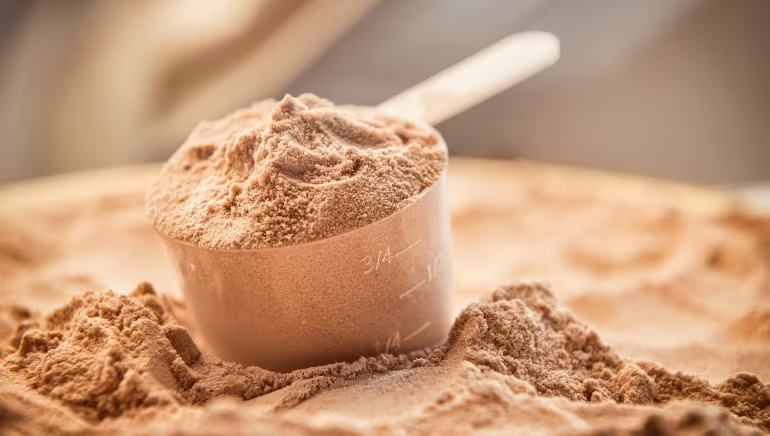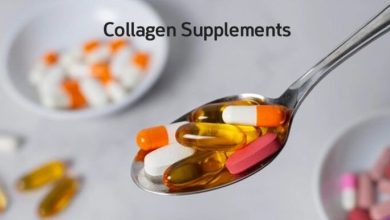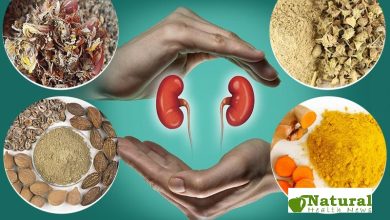The Hidden Dangers Lurking in Your Protein Powder—And How to Find a Safe One

Protein powder has become a staple in the fitness world — from athletes and bodybuilders to busy professionals trying to get more protein on the go. It promises muscle growth, weight management, and recovery in a convenient scoop. But what if that scoop of protein you rely on for health and performance is actually doing you harm?
Beneath the glossy labels and celebrity endorsements, some protein powders hide ingredients that could damage your kidneys, disrupt your hormones, or even increase cancer risk. This article reveals the hidden dangers lurking in your protein powder and provides a comprehensive guide to finding a safe, clean, and effective one.
Understanding What’s Inside Your Protein Powder
Before diving into the dangers, it’s important to understand what’s in your protein powder. Most powders contain a combination of:
- Protein source: Whey, casein, soy, pea, rice, or hemp.
- Sweeteners: Sugar, artificial sweeteners (like sucralose or aspartame), or natural ones like stevia.
- Flavoring and additives: Used to improve taste, texture, and shelf life.
- Vitamins, minerals, or enzymes: Added to boost nutritional value.
While some of these ingredients are harmless, many commercial brands add cheap fillers, artificial chemicals, or heavy metals that can pose serious health risks.
1. Heavy Metals: The Silent Poison in Your Shake
What’s the danger?
In 2018, the Clean Label Project, a nonprofit organization, tested over 130 popular protein powders and found alarming results:
- 75% contained measurable levels of lead.
- 55% contained BPA (an industrial chemical linked to hormonal disruption).
- Cadmium, arsenic, and mercury were also found in many samples.
These heavy metals are toxic to your body. Over time, they can accumulate in your tissues and organs, leading to health issues such as:
- Kidney and liver damage
- Neurological problems
- Reproductive and developmental issues
- Increased risk of cancer
Why does this happen?
Heavy metals can contaminate protein powders during plant growth (from soil pollution) or manufacturing. For example:
- Rice-based proteins often absorb arsenic from the soil.
- Whey proteins can be contaminated during dairy processing.
- Soy-based proteins might come from genetically modified crops treated with toxic pesticides.
How to avoid it:
- Choose brands that test for heavy metals and display third-party lab results on their website.
- Look for a “Clean Label Project Certified” or NSF Certified for Sport seal.
- Avoid powders made from rice or soy unless they’re verified organic and tested for purity.
2. Artificial Sweeteners: The Hidden Hormone Disruptors
Many protein powders use artificial sweeteners like sucralose (Splenda), aspartame, or acesulfame potassium to make them taste good without sugar. While these ingredients reduce calories, they can have hidden health consequences.
The health risks:
- Gut health disruption: Artificial sweeteners can alter gut bacteria balance, leading to bloating, digestive issues, and weakened immunity.
- Insulin response issues: Studies suggest that sweeteners like sucralose may increase insulin resistance, leading to higher blood sugar levels.
- Hormonal imbalance: Some sweeteners interfere with hormone signaling, potentially affecting appetite and metabolism.
Better alternatives:
If you want sweetness without the health risks, look for powders sweetened with:
- Stevia (natural, plant-based)
- Monk fruit extract
- Coconut sugar (in moderation)
These natural sweeteners offer a cleaner, safer option while maintaining flavor.
3. Hidden Fillers and Additives: What You Don’t See on the Label
To cut production costs, some companies add cheap fillers that dilute the protein content. You might think you’re getting 25 grams of protein per scoop, but you could be consuming only 15–18 grams and a handful of unnecessary additives.
Common fillers and additives to watch for:
- Maltodextrin: A cheap carbohydrate that spikes blood sugar levels.
- Gums (xanthan, guar): Can cause bloating and digestive discomfort.
- Carrageenan: A thickener linked to intestinal inflammation.
- Soy lecithin: A common emulsifier that may come from genetically modified soy.
Why they’re harmful:
These ingredients may seem harmless but can stress your digestive system, trigger inflammation, and reduce nutrient absorption—especially if consumed daily.
How to avoid them:
- Check the label for short ingredient lists (fewer than 10 ingredients is ideal).
- Avoid powders with unrecognizable chemical names.
- Choose single-ingredient protein powders (e.g., “100% whey isolate” or “organic pea protein”).
4. Hormone-Disrupting Ingredients and BPA Exposure
Many protein powders are packaged in plastic containers, and not all plastics are created equal. Some contain Bisphenol A (BPA) or similar chemicals that can leach into the powder.
What BPA does:
BPA mimics estrogen in the body, leading to:
- Hormonal imbalance
- Fertility issues
- Weight gain
- Increased risk of breast and prostate cancer
Even “BPA-free” containers aren’t always safe—some use BPS, which may have similar effects.
What to look for:
- Choose protein powders in glass jars or BPA-free, food-grade packaging.
- Store powders in cool, dry places to minimize chemical leaching.
- Avoid using hot liquids with protein powder stored in plastic containers.
5. Hidden Sugars and Calories: The Sweet Trap
Many “mass gainers” and flavored protein powders contain added sugars under sneaky names like:
- Dextrose
- Corn syrup solids
- Fructose
- Cane juice solids
While these enhance taste, they can sabotage your fitness goals by:
- Spiking insulin and blood sugar
- Promoting fat gain
- Increasing inflammation
The smart move:
Look for powders with less than 3 grams of sugar per serving.
If you need extra calories, add natural sources like oats, bananas, or nut butter instead of relying on sugar-filled mixes.
6. Allergens and Hidden Dairy Sensitivities
Even if your protein powder is labeled “whey isolate” or “plant-based,” it could still cause digestive issues due to cross-contamination or hidden allergens.
Common culprits:
- Whey concentrate: Contains lactose, which can cause bloating or diarrhea in lactose-intolerant individuals.
- Soy protein: Can trigger allergic reactions and hormonal effects due to its phytoestrogen content.
- Gluten contamination: Some brands process powders in facilities that handle gluten-containing grains.
Safe alternatives:
- For lactose intolerance: Choose whey isolate, egg white, or plant-based proteins (like pea or hemp).
- For soy allergies: Avoid soy entirely and opt for rice-pea protein blends.
- For celiac disease: Look for “Certified Gluten-Free” on the label.
7. Overconsumption: When Too Much Protein Becomes Dangerous
Even if your protein powder is clean, too much of a good thing can be harmful.
Risks of excessive protein intake:
- Kidney strain: Especially in individuals with preexisting kidney issues.
- Dehydration: Protein metabolism requires extra water for waste removal.
- Calcium loss: High protein intake can cause calcium excretion, affecting bone health.
- Digestive issues: Constipation and bloating are common with overuse.
How much is enough?
The general guideline for most adults is 0.8–1.6 grams of protein per kilogram of body weight per day. Athletes or those in heavy training can go slightly higher but should balance intake between food and supplements.
8. Marketing Deception: Don’t Believe the Hype
The supplement industry is worth over $20 billion, and protein powders are among the most profitable products. Unfortunately, many companies prioritize marketing over quality.
Common marketing tricks:
- “All-natural” – A vague claim with no regulatory definition.
- “Clinically proven” – Often based on internal or biased studies.
- “Proprietary blends” – Used to hide actual ingredient quantities.
How to protect yourself:
- Read independent reviews and third-party lab reports.
- Research the manufacturer’s reputation.
- Avoid brands that make exaggerated claims like “instant muscle gain” or “fat loss in days.”
9. The Environmental Impact of Protein Powders
While the health effects are concerning, many people overlook the environmental impact of their protein supplements.
- Whey protein production contributes to dairy industry waste and greenhouse gases.
- Soy protein is linked to deforestation and pesticide use.
- Plastic packaging adds to global pollution.
Eco-friendly alternatives:
- Choose plant-based proteins from organic sources.
- Support brands that use compostable or recyclable packaging.
- Buy in bulk to reduce waste.
10. How to Choose a Safe and Clean Protein Powder
Now that you know what to avoid, let’s talk about what to look for in a high-quality, safe protein powder.
✅ Step-by-Step Checklist:
- Check for third-party testing:
Look for certifications from:- NSF Certified for Sport
- Informed Choice
- Clean Label Project
- Read the ingredient list:
- Choose powders with minimal ingredients.
- Avoid artificial colors, flavors, or preservatives.
- Select a clean protein source:
- For omnivores: Grass-fed whey isolate or egg white protein.
- For vegans: Organic pea, hemp, or pumpkin seed protein.
- Check for heavy metal reports:
- Many transparent brands publish COAs (Certificates of Analysis) online.
- Consider digestibility:
- Look for added digestive enzymes like bromelain or papain if you have gut sensitivity.
- Mind the sweeteners:
- Opt for unsweetened or stevia/monk fruit–sweetened powders.
- Buy from reputable sources:
- Avoid unverified sellers on online marketplaces.
- Purchase directly from the brand’s official website or a trusted health retailer.
11. Best Practices for Safe Protein Use
Even with the cleanest protein powder, how you use it matters.
Tips:
- Don’t replace meals entirely with protein shakes. Whole foods provide essential vitamins and fiber.
- Hydrate well—protein metabolism increases water needs.
- Cycle your usage—take breaks every few months to prevent over-reliance.
- Store properly—keep it airtight and dry to prevent mold or bacterial growth.
12. The Healthier Alternative: Get Protein from Whole Foods
While protein powders are convenient, they should supplement, not replace, real food.
Top whole-food protein sources:
- Animal-based: Chicken, fish, eggs, Greek yogurt, cottage cheese.
- Plant-based: Lentils, quinoa, beans, tofu, tempeh, nuts, and seeds.
Whole foods offer not only protein but also essential micronutrients, antioxidants, and fiber—none of which you’ll find in a powder.
Conclusion: Choose Wisely, Protect Your Health
Protein powders can be a great addition to your diet—but only if they’re clean, transparent, and responsibly made. The hidden dangers lurking in some powders—like heavy metals, artificial additives, and hidden sugars—can turn your health investment into a silent threat.
By learning how to read labels, verifying certifications, and choosing trusted brands, you can enjoy the benefits of protein supplementation without compromising your well-being.
When it comes to your health, purity matters more than promises. So next time you scoop your protein shake, make sure what’s inside truly fuels your body—not harms it.




